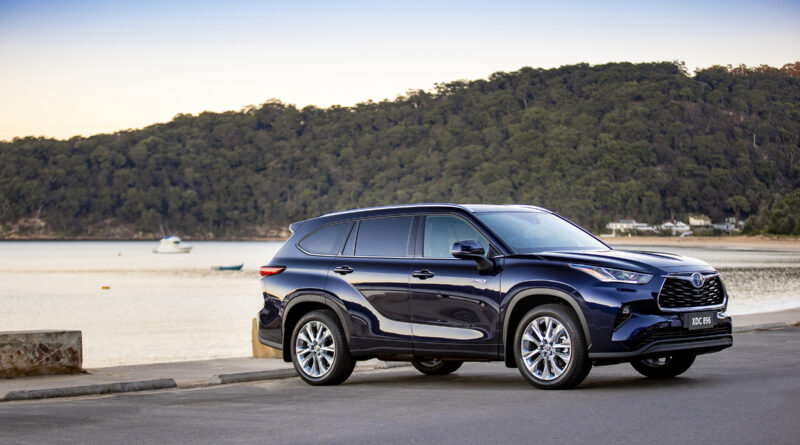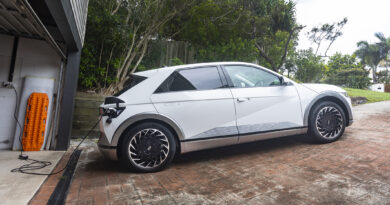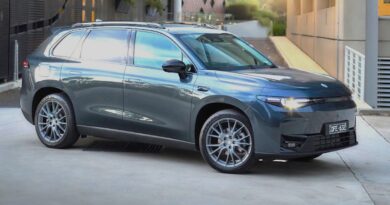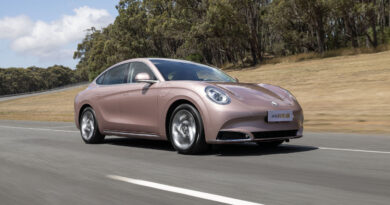2021 Toyota Kluger Hybrid review
Toyota does two breeds of SUVs: the ones that can go off-road and the ones that can’t (or, at least, can’t do a whole lot in the rough stuff.
Like the C-HR, Yaris Cross and RAV4, the Kluger falls into that soft-roader category of SUVs that look the business but are more about school drop-offs and weekend sport.
The fourth generation Kluger has just arrived in Australia. Known as the Highlander overseas (Hyundai owns the rights to that name in Australia) it’s grown in size and also grown in stature within the Toyota range.
And for the first time, the Kluger is now available with a hybrid system. Like all Toyota hybrids, it’s a regular hybrid setup (rather than a plug-in hybrid) that runs purely on petrol and can’t be recharged externally.
Value: Toyota Kluger Hybrid
Entry to the Kluger family starts at $47,650 plus on-road costs, but that’s for the V6 model that carries over a punchy but thirsty engine, albeit one that now gets a stop-start system to fractionally reduce fuel use.
But it’s the hybrid we’re interested in here. Strap yourself in because it’s a $6500 leap to go back to a four-cylinder and pick up some electric assistance.
That’s in part because the Kluger Hybrid only comes with an all-wheel drive system (in Australia, at least). So you’re not only paying for the step up to drive all four wheels (typically around $4000) but also the electric motors and drive system to make the hybrid magic happen (more on that soon).
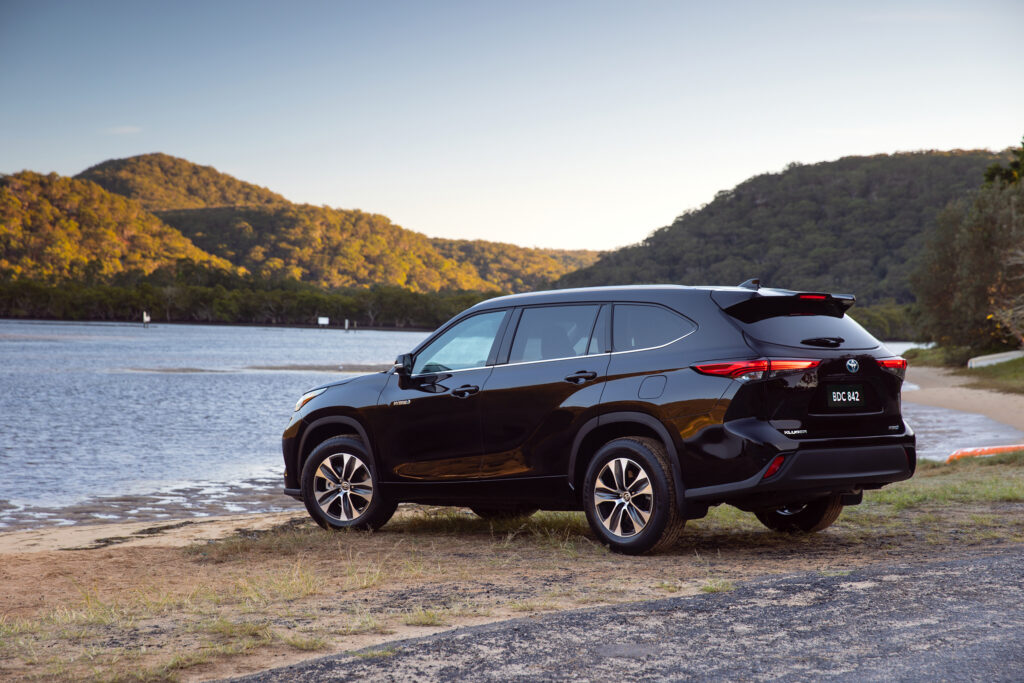
So that means a starting price of $54,150 for the base model GX Hybrid, which like all Klugers gets seating for seven. For that you get a decent amount of kit, including a high level of active safety incorporating not only auto emergency braking (AEB) but also rear cross traffic alert and blind spot warning. There’s also smart key entry, tri-zone ventilation, parking sensors at either end, 18-inch alloy wheels and an 8.0-inch touchscreen with Apple CarPlay and Android Auto, plus five USB ports (three front, two rear).
It’s a big jump to the next model in the range, the GXL, priced from $63,350. It adds roof rails, a powered tailgate, power adjustable front seats, heated front seats and unique alloy wheels in the same 18-inch diameter.
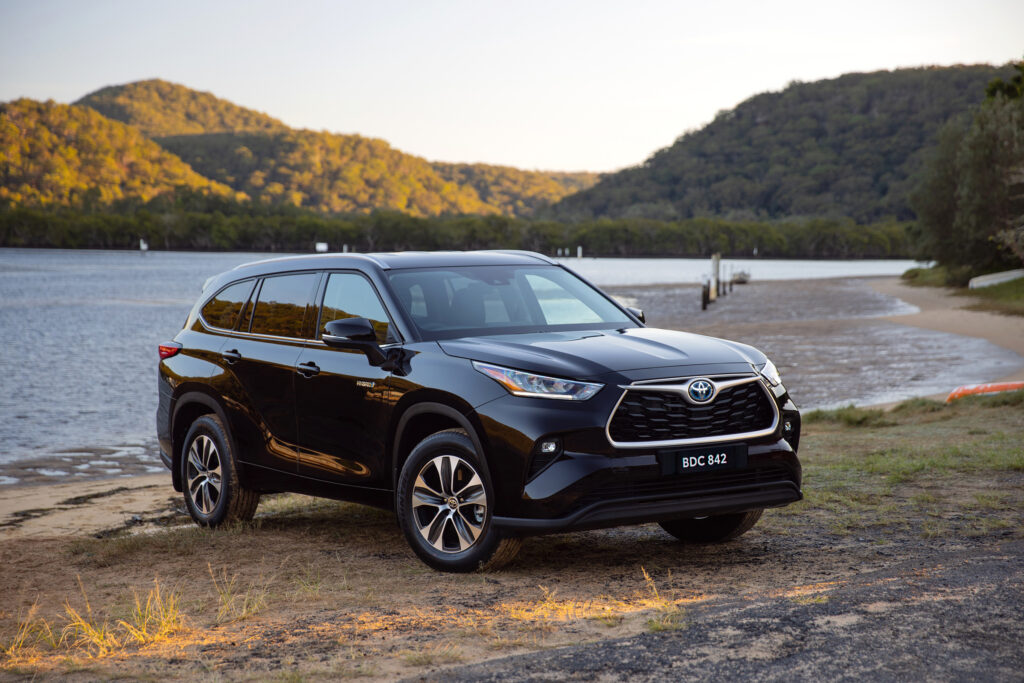
Those wanting all the fruit can go for the Hybrid Grande, which is even bigger step way up to $75,400. In the Grande there’s some real leather thrown in as well as wood finishes, a panoramic sunroof, blinds in the back doors, a foot motion detector for opening the tailgate, head-up display, 360-degree camera and an 11-speaker JBL audio system. The wheels also jump to 20 inches with a chrome look to ramp up the glitz.
Inside the Kluger Hybrid
The Kluger is a big SUV with ample space for big families. It’s also stepped up in terms of presentation compared with the previous one.
Finishes are of a higher quality and stitched edges on various surfaces add some class.
But there’s still a Toyota mass market flavour to it that lacks some of the specialness of rivals such as the Mazda CX-9 and Hyundai Palisade (neither of which is available as a hybrid).


Like all seven-seat SUVs you’re unlikely to have every seat full and still fit everyone’s luggage in, although Toyota has increased the length of the boot by 50mm to increase capacity to 241 litres.
Luggage space is more plentiful with the third row of seats folded into the floor. Slide the middle row all the way forward and you’ll get up to 552L, or you can run it as a two-seater with 1150L of cargo volume.
Occupants are also generally well catered for. Up front there’s ample space and adjustability to the driver’s seat as well as loads of storage. A deep centre console does most of the grunt work, plus there are other areas for odds-and-ends smattered about. The phone-friendly shelves built into the dash (one above the glovebox and one in the centre) are also terrific additions.

The middle row is also thoroughly adult friendly, especially when slid all the way back, which admittedly cuts into legroom of those further aft. The seat itself is broad, easily taking three people.
You’ll be mucking around with two levers to fold the middle row seats so you can access the third row. And while it’s best left to smaller people, adults can make it work, too.
Air vents in the roof feed fresh air around the cabin.
Performance and efficiency
The Kluger’s hybrid drivetrain uses the 2.5-litre four-cylinder engine employed for the Camry Hybrid and RAV4 Hybrid.
But the engine makes more power in the Kluger to deal with the bigger, heavier body. All up it dishes out 142kW of power and 242Nm of torque and it works in tandem with three electric motors.
One of those motors is purely for regenerating electricity – capturing energy when braking to put it back into the battery.

Speaking of which, whereas the Camry recently stepped up to a newer lithium-ion battery – similar to those used in all EVs – the Kluger sticks with older (and less energy dense) nickel-metal hydride battery tech. As with all Toyota hybrids, there’s not much in the way of battery capacity, a total of 1.9kWh seeing things out.
The battery pack sends power to the two electric motors used to drive the wheels. The first muscles up 134kW/270Nm to assist the petrol engine in driving only the front wheels. In most situations it’s this combination doing most of the work.
The last of the e-motors sits out on its own driving the rear wheels. It makes 40kW/121Nm and is electronically controlled to work in tandem with the drivetrain up front and provide all-wheel drive assistance and traction as required.
It’s the same basic setup used in all-wheel drive versions of the RAV4 Hybrid, in turn doing without a driveshaft between the front and rear wheels.
And it works well. There’s nothing sexy about the sound and with a combined 184kW it’s not as punchy as the V6.
But the four-cylinder hybrid arguably has better initial responses than the V6 courtesy of the generous initial pull provided by the electric motors.

That makes it a useful device around town, where there’s more than enough go to keep things motoring along nicely. Push it harder and the engine works harder on the open road to easily keep the speedo ticking into triple figures while having more in reserve for overtaking.
It’s close to six-cylinder performance – and in some instances superior – without the fuel use. The official 0-100km/h claim is 8.4 seconds (versus 7.8 seconds for the V6 AWD) but at lower speeds there are times the hybrid provides more punch than the V6.
And that’s the big appeal with the Kluger Hybrid. Whereas most large petrol-powered SUVs will slurp plenty of fuel around town – think up to 15 litres per 100km, or more – the hybrid is impressively frugal.
Claimed overall fuel consumption is 5.6L/100km and around town that figure edges up to 6.0L/100km. During our day with the car we used a bit more, but at around 6.5L/100km it’s still impressive given the performance on offer and how many people you can shift.
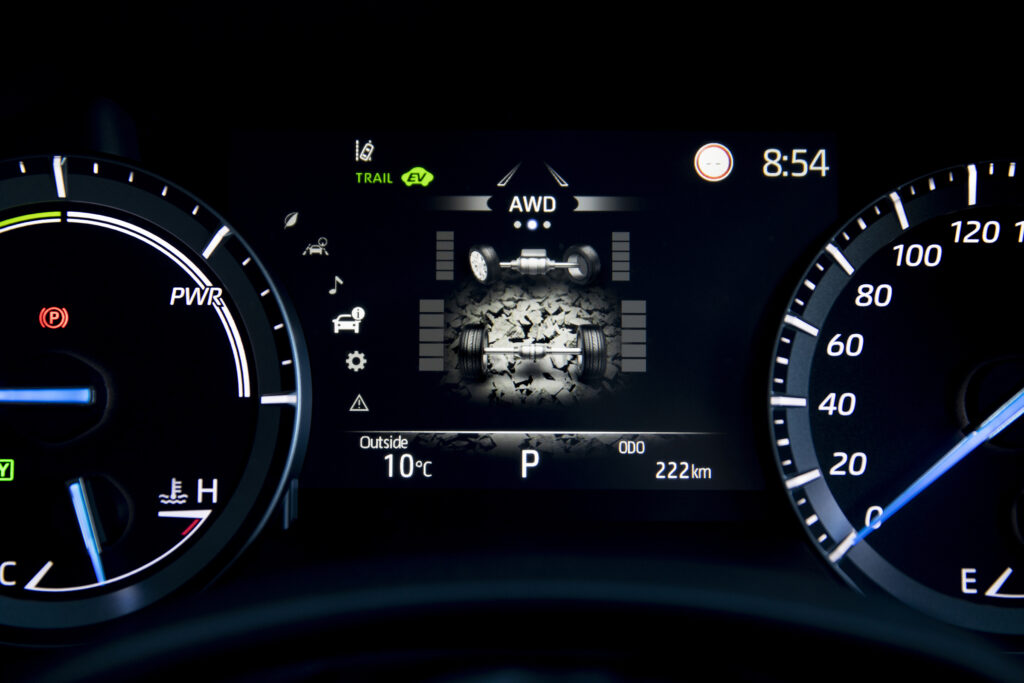
There is one negative, though. Whereas the V6 Klugers can run on regular unleaded, the Hybrids require premium unleaded, so some of those fuel savings are diluted.
Still, it’s a much cheaper way to motor than the rivals.
Ride and handling
Any time you’re asking around 1.9 to 2.0 tonnes of SUV to move or change direction there’s a penalty somewhere along the line.
But the Kluger does a decent job of hiding its bulk, making light work of city traffic and making for easy parking manoeuvrability.
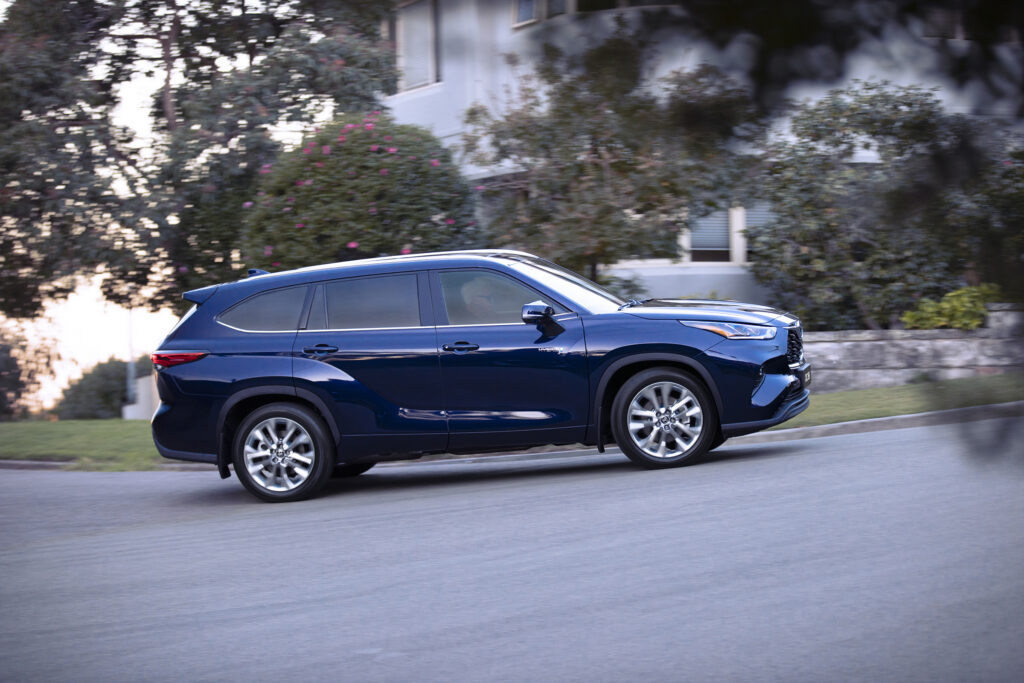
The Grande may have the luxury kit but its lower profile tyres (teamed with the 20-inch tyres) add some additional grittiness to the ride. It’s far from terse, but it does pick up more in the way of smaller imperfections.
But the Kluger is generally well behaved, with stout cornering nous and a solidity that makes it easy to pilot at freeway speeds and on challenging roads. The steering is dull off-centre – especially in its initial reactions – but the responses are good and there’s ample grip.
The cabin is also relatively quiet, teaming with the well-controlled ride for above average occupant comfort.
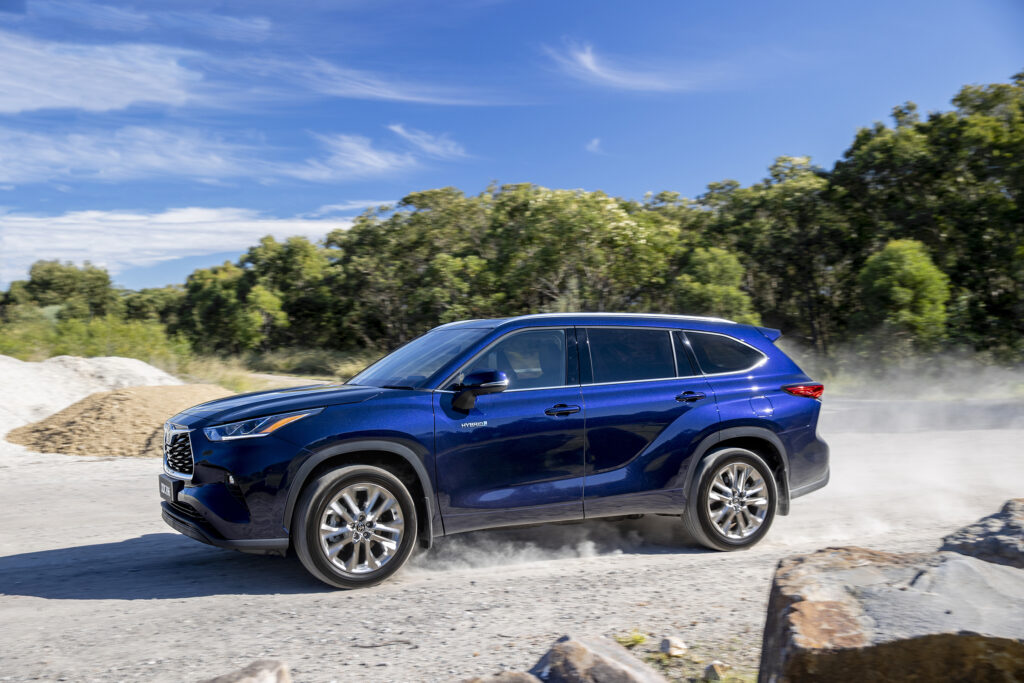
While the Kluger’s focus is the streets and suburbs, it can also get its tyres dirty. There are some drive modes that tailor traction control and throttle response to loose surfaces. But don’t get too adventurous: there’s nothing like the capability built into a Prado or LandCruiser.
Talking point
Other than the price premium there’s very little penalty in choosing the hybrid over the V6 in the Kluger lineup. Like all models, the hybrids come with a full-size spare tyre and the batteries are well hidden without impacting boot capacity.
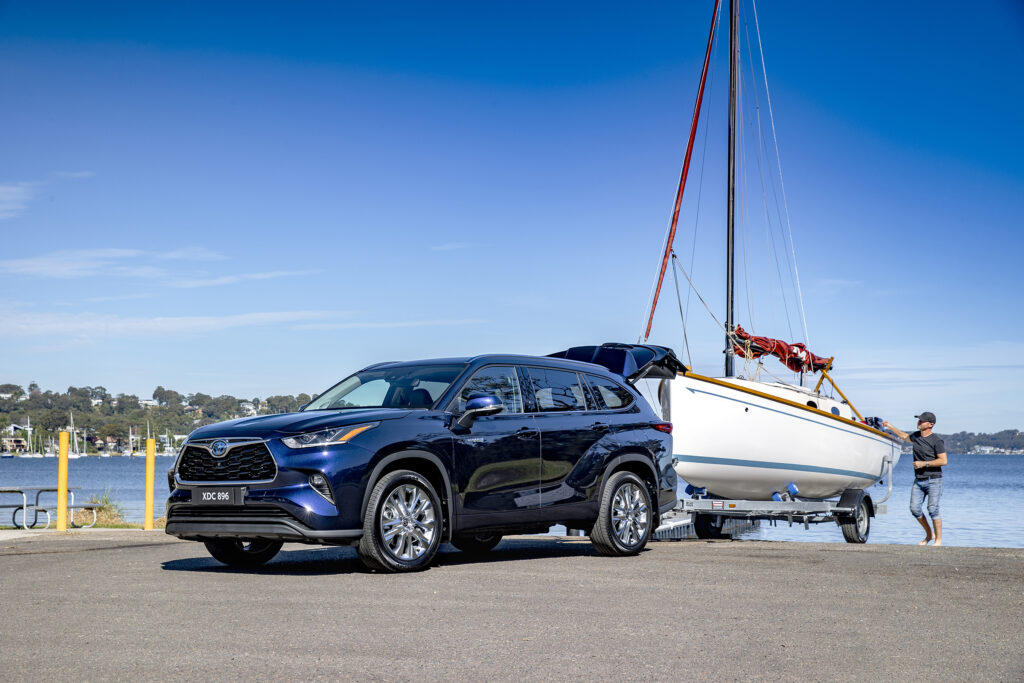
Plus the hybrid can tow the same 2000kg as the V6.
Safety
There are seven airbags in the Kluger; dual front, front side and side curtain as well as a driver’s knee airbag. That provides good coverage, although like most seven-seat SUVs the side curtains won’t necessarily protect the heads of those in the third row.
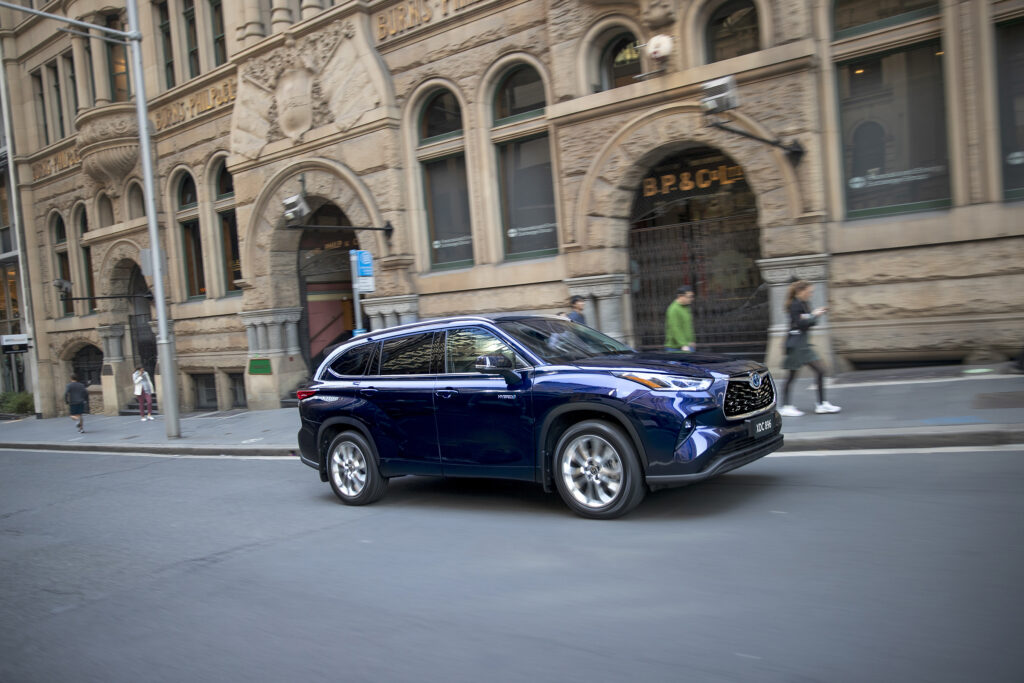
Active safety is also well taken care of with autonomous emergency braking (AEB) and road sign recognition to display the speed limit. There’s also lane keep assistance with active steering, although like many of those systems it’s not particularly useful.
Far handier are rear cross traffic alert and blind spot monitoring.
Verdict
The new Kluger sticks to a familiar formula and builds on it with a large seven-seater that performs family duties nicely.
Improvements to the cabin are welcome, although there’s more work to be done to match the class best.
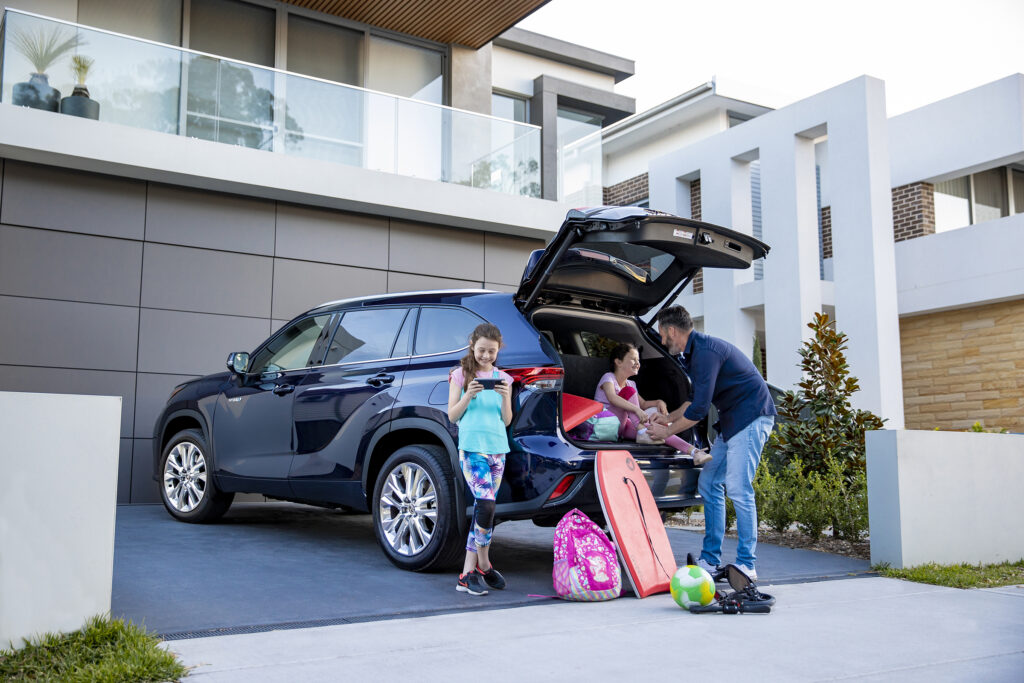
More impressive is the hybrid system that provides genuine fuel-saving benefits. It’s just a shame that hybrid isn’t more affordable.
2021 Toyota Kluger Hybrid specifications
Price: $54,150 (Kluger GX AWD), $63,350 (Kluger GXL Hybrid AWD), $75,400 (Kluger Grande Hybrid AWD)
Basics: Hybrid, 7 seats, 5 doors, large SUV, all-wheel drive
Range: 1161km
Battery capacity: 1.9kWh
Battery warranty: 5 years/unlimited km (extended to 10 years if serviced and checked annually at a Toyota dealer)
Fuel use: 5.6/100km
Drivetrain: 2.5-litre 4-cylinder and three electric motors (1 regen, 2 driving the car), 184kW combined power
0-100km/h: 8.4 seconds

